Wrapping your sushi, topping your okonomiyaki, or floating in your miso soup: there's a lot of seaweed in Japanese cuisine. Seaweed consumption has a long history in Japan. In the Taiho Code of 701, one of Japan's earliest legal codes, some seaweeds (including kombu, nori, and wakame) were an acceptable form of tax payment. Though foreigners have become more familiar with their flavors over the past few decades, seaweed and the full extent of its culinary applications remain a bit mysterious to many (at least in America). Let's have a look at these delicacies of the deep, their history, production, and a recipe you can try at home.

Seaweed is a word applied to a wide variety of species. They are divided into three different Phylum: Rhodophyta (red), Ochrophyta (brown), Chlorophyta (green). Unlike terrestrial plants seaweeds don't have roots. They do have parts for anchoring themselves which may appear root-like, but they draw their nutrients straight from the water around them. Like other plants, they do photosynthesize, so most seaweed grows in shallow water where the light can reach them.
Kombu 昆布

ß Kombu refers mainly to Saccharina japonica, but sometimes to other kelp species. There is some evidence of earlier kombu consumption, but it was definitely being eaten by the eighth century. It grows mainly around Hokkaido and northern Honshu, but during the Muromachi period (1336-1573), new drying techniques were developed which let kombu be transported further. By the Edo period it had become widely used in Japanese cooking. It even became a mainstay in the cuisine of the Ryukyu kingdom (modern day Okinawa Prefecture), roughly 1600 km away! Even today, Okinawan households consume more kombu per year than those of any other prefecture.

You may be wondering, as I once did, if the kombucha that is so currently popular amongst the health conscious is made with kombu. The answer is no. In Japan there are teas made from dried, powdered kombu, but that is not what Americans are buying at Whole Foods these days. The popular kombucha is black or green tea that is fermented with a colony of bacteria or yeast. It's probably from northeast China or Manchuria and spread to Russia sometime before 1910. The name kombucha (referring to this drink) first appeared in 1995, but the reasons remain uncertain. People may have thought the film left by the fermenting culture looked like seaweed. In Japan this drink is called koucha kinoko literally "red tea mushroom," though "red tea" is how Japanese labels what is called black tea in English. Does your head hurt now too? Maybe you should have a cup of tea. Let's return to the basics.

Kombu's most essential role in Japanese cooking is in providing umami flavor to most dashi (stock), and dashi is used in a whole lot of recipes. Kombu does have many other uses though, like wrapping appetizers or in pickle making.
Wakame わかめ
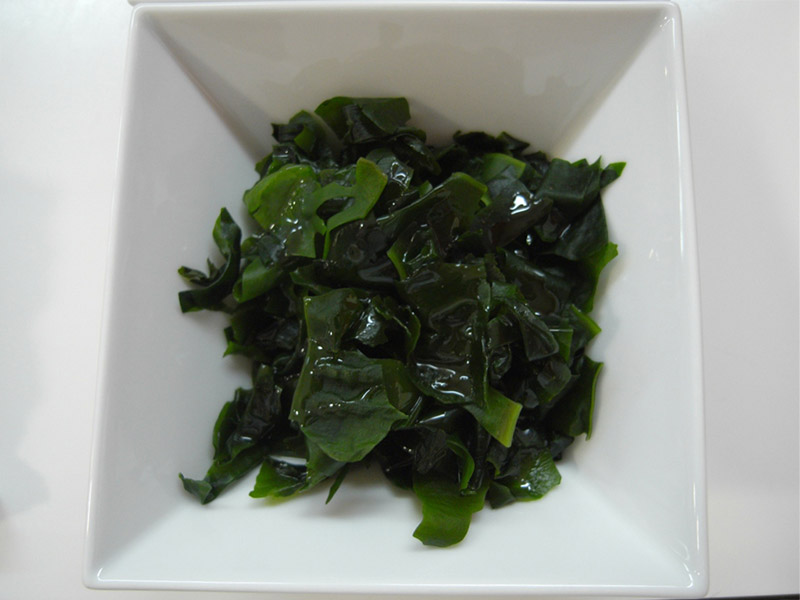
Undaria pinnatifida is a large brown seaweed, usually found in shallow waters. It can grow in dense stands, making a thick seaweedy forest. It's also tough, and can deal with a range of temperatures and salinity levels. It's native to coastlines around Japan, Korea, and China, but has become an invasive species as well (more on this in an upcoming article). What is believed to be wakame residue has been found on Jomon period (14,000-300 BCE) pottery, showing that people in Japan have been munching on it for a long time. You probably know it best from its use in miso soup.
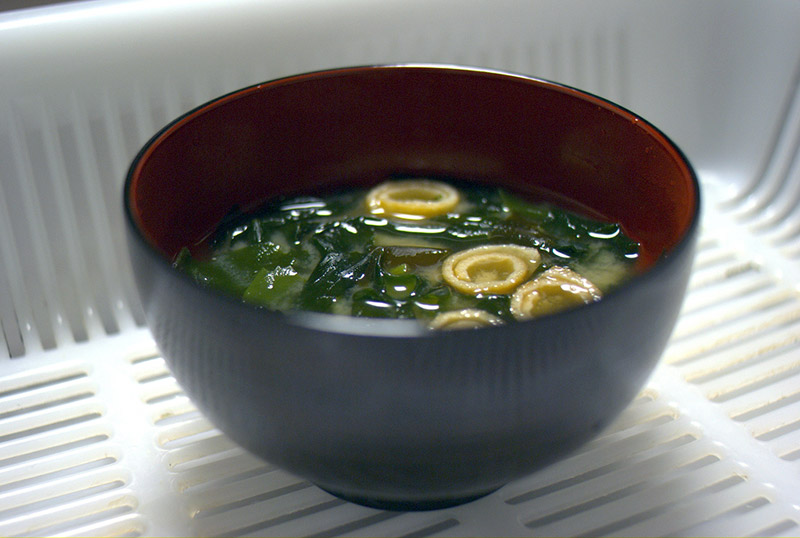
Nori 海苔
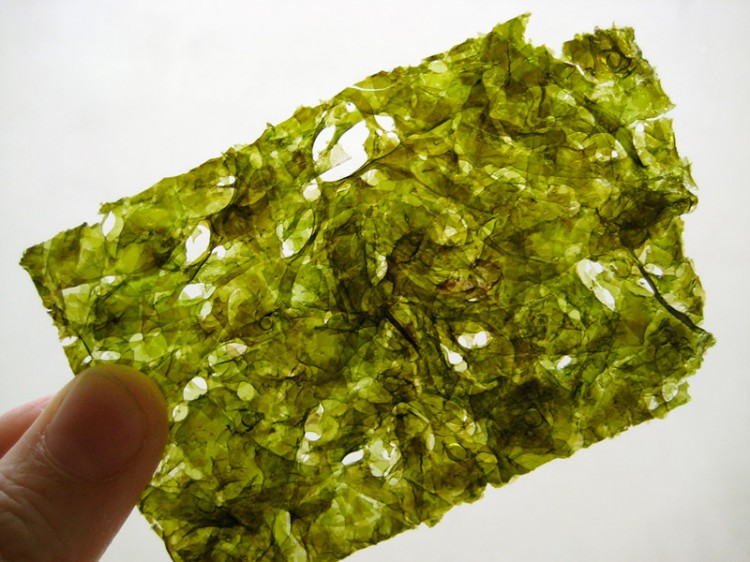
Nori, which now wraps your sushi, originally referred to number of seaweeds, but came to be applied to a couple species of red algae of the genus Porphyra. It has been eaten in Japan since at least the eighth century. Nori was collected from the rocks, shells, wood, etc. that it grew upon in shallow waters.
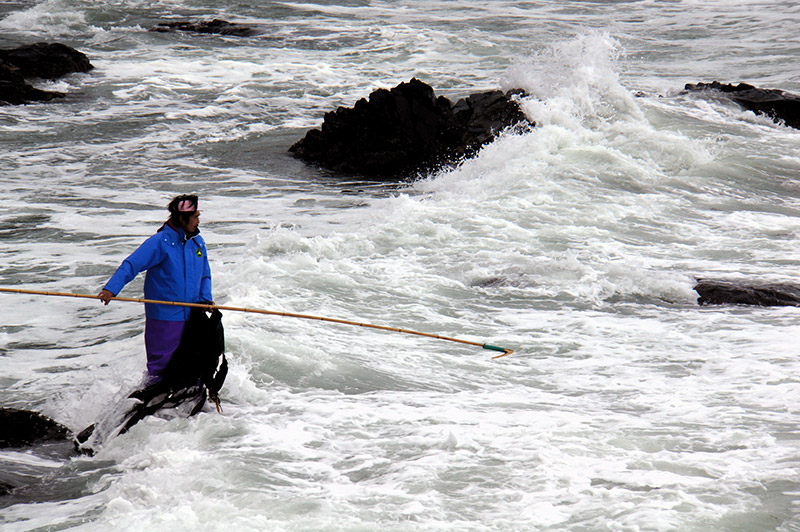
Around the beginning of the Edo period (1603-1868) it was discovered that the nori growing in Edo Bay, near Asakusa was especially delicious. As the capital grew and reclaimed a lot of shoreline people began cultivating nori on poles stuck in the shallows, then on nets attached to poles, then on large floating nets. Over time Edo Bay became Tokyo Bay and the waters became too warm and polluted for nori to thrive as it once did. There are still a few closely guarded locations in Tokyo Bay where nori is grown, and you can still buy the famous Asakusa nori if you don't mind throwing down $300 for 72 sheets.
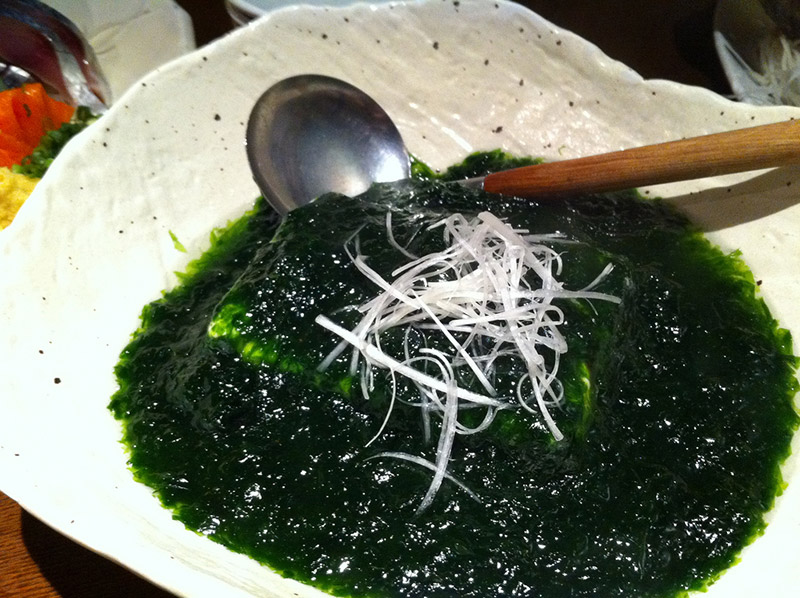
For hundreds of years it was eaten in a wet, paste-like form. The dry, sheet form was invented in the early 18th century based on the paper making process. After being rinsed, strained and chopped into fine pieces the nori is put into a wooden frame on a bamboo mat in a bucket of water to make a sheet. Everything is then removed from the water and the bamboo mat with the nori sheet is set out on a rack to dry in the sun. After drying, sheets of nori are usually roasted.

In 1949, British scientist Kathleen Mary Drew-Baker discovered that nori has three distinct stages in its life cycle. She found that during one of these stages nori grows on oyster shells and similar surfaces. This discovery led to the practice of collecting oyster shells and using them to 'seed,' an innovation which led to an upscale in nori production. There is a monument to Kathleen Drew-Baker at Sumiyoshi Shrine in Uto City, Kumamoto Prefecture, where she is honored as the "mother of the sea" every April 14th.
In 2010 another nori-related scientific discovery was made. Scientists found evidence that Japanese people have a genetic advantage in getting nutrients from nori. Exclusively in people of Japanese ancestry, the scientists found gut bacteria which produce an enzyme for breaking down algal carbohydrates such as those found in nori. There are certain marine bacteria that produce similar enzymes, and they hypothesized that in the past such a marine bacteria was ingested and transferred the genes for making the algae-eating enzyme to the human gut bacteria. They speculate that this is only found in Japanese people because such gene transfer events would be rare, and due to the volume of seaweed eaten by the Japanese, it would have been far more useful to them than most other people.
Aonori 青のり

It's not just the name; aonori and nori are from different families. Aonori can refer to algae of a couple different genera in the Ulvaceae family. It makes a great topping for dishes like yakisoba, takoyaki, and okonomiyaki, adding a little extra umami.
Hijiki 鹿尾菜 / 羊栖菜
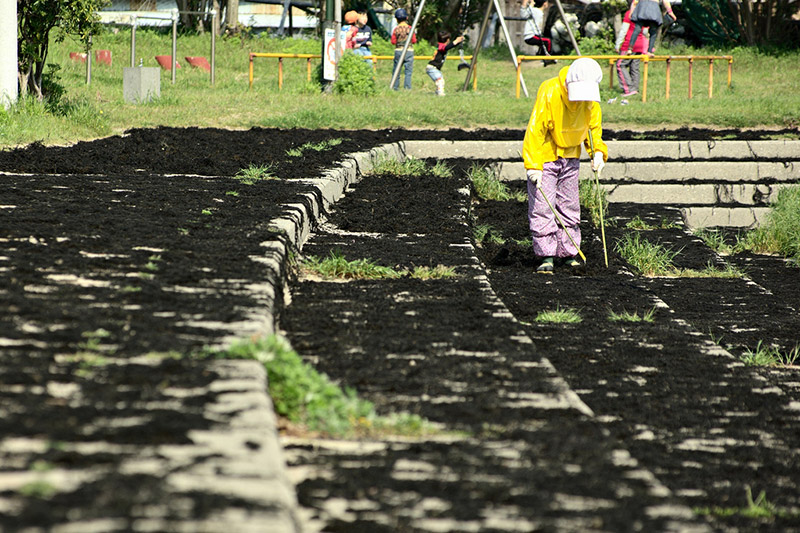
Sargassum fusiforme grows attached to the rocky bottoms of coastlines, but is sometimes ripped free by waves or weather and continues to live in a more free floating manner. Some hijiki is cultivated, but when harvested from the wild divers cut it with sickles during low tide in springtime. In the store you can find just the little leaves or leaves and stems together. Just make sure to thouroughly rehydrate or you'll be in for a long chew.

Hijiki contains all sorts of mineral goodness, being high in calcium, iodine, and magnesium. However studies have found that hijiki also contains potentially harmful levels of inorganic arsenic, and currently the food safety agencies of the U.S., U.K., and Canada advise against eating it. The Japanese government responded with a report that conceded that eating more than 4.7 grams of hijiki a day could exceed tolerable levels of inorganic arsenic, but pointed out that the average daily consumption in Japan is only 0.9 grams. So far, no known illnesses have been linked to hijiki consumption.
Arame 荒布

Eisenia bicyclis is a small species of kelp native (seemingly exclusively) to Japan. It is a stiff, woody stem with two feathery fronds growing from the top. It has a mild flavor, so it's used in a wide variety of side dishes, soups and salads.
Umi budo 海ぶどう

The name means "sea grapes," and you can see why. Not unlike grapes they, pop pleasantly in your mouth, though umi budo are slightly salty, not sweet like their vine-dangling counterparts. Known to the scientific community as caulerpa lentillifera, vertical stems of tightly packed spheres rise from long horizontal stems that spread across the ocean floor. Umi budo are a popular dish in Okinawa, usually fresh with a side of soy sauce, or as part of a salad.
Allez Cuisine!

I've only touched the surface of the many tasty sea veggies used in Japanese cuisine. What's your favorite seaweed? Hopefully you'll be inspired to go cook. I know writing this made me start to crave some umami filled goodness. One way to experience a lot of that great seaweed flavor is by making tsukudani, seaweed simmered in soy sauce and mirin. You can eat it with rice or put it in the center of onigiri, but be careful. It's potent. I'll leave you with this simple delicious recipe. It's for kombu, but you can try it with other seaweeds too.
